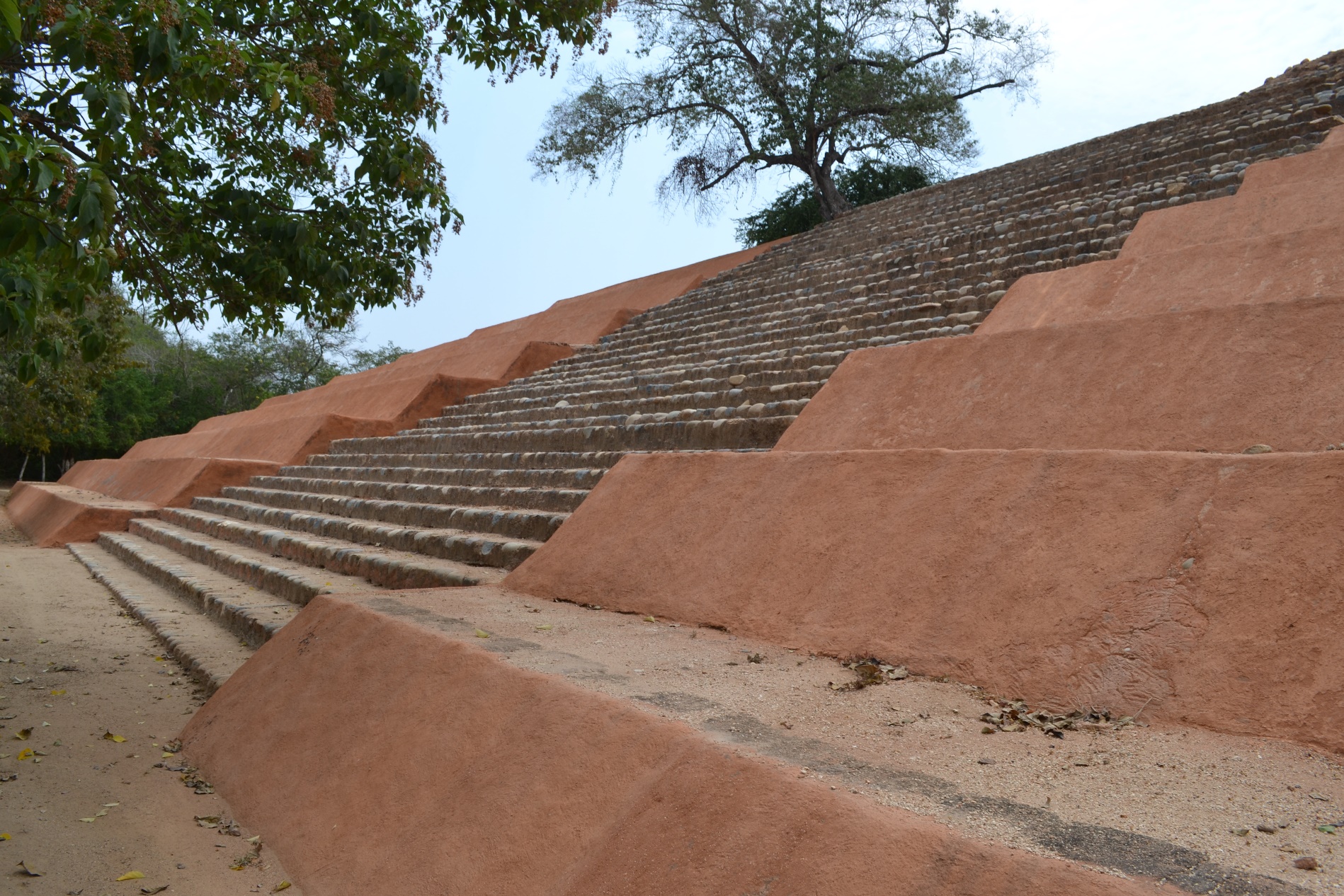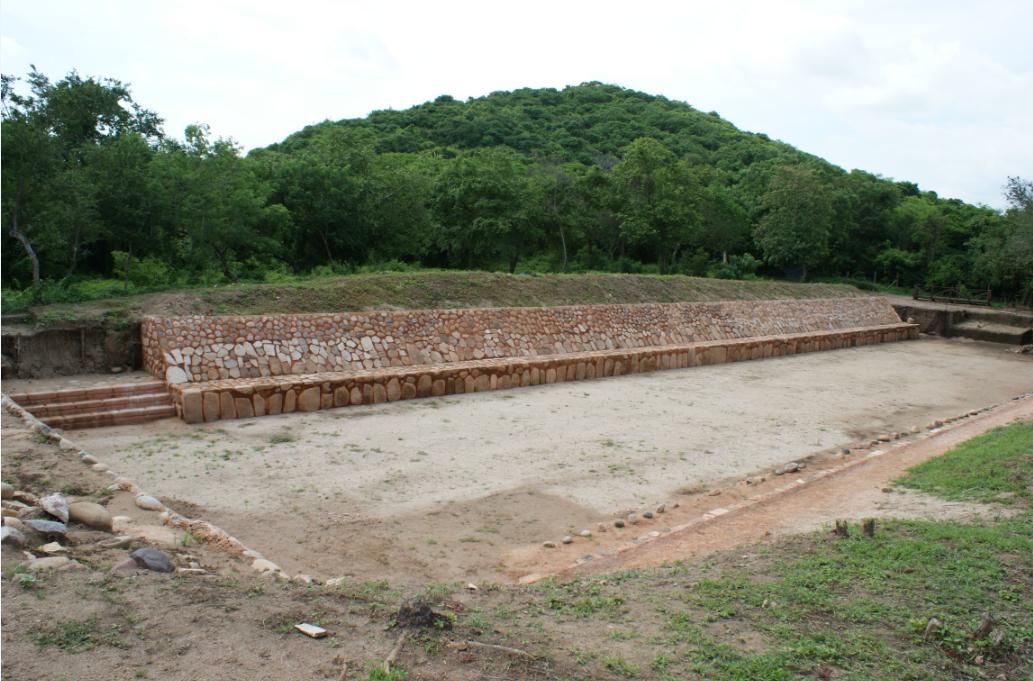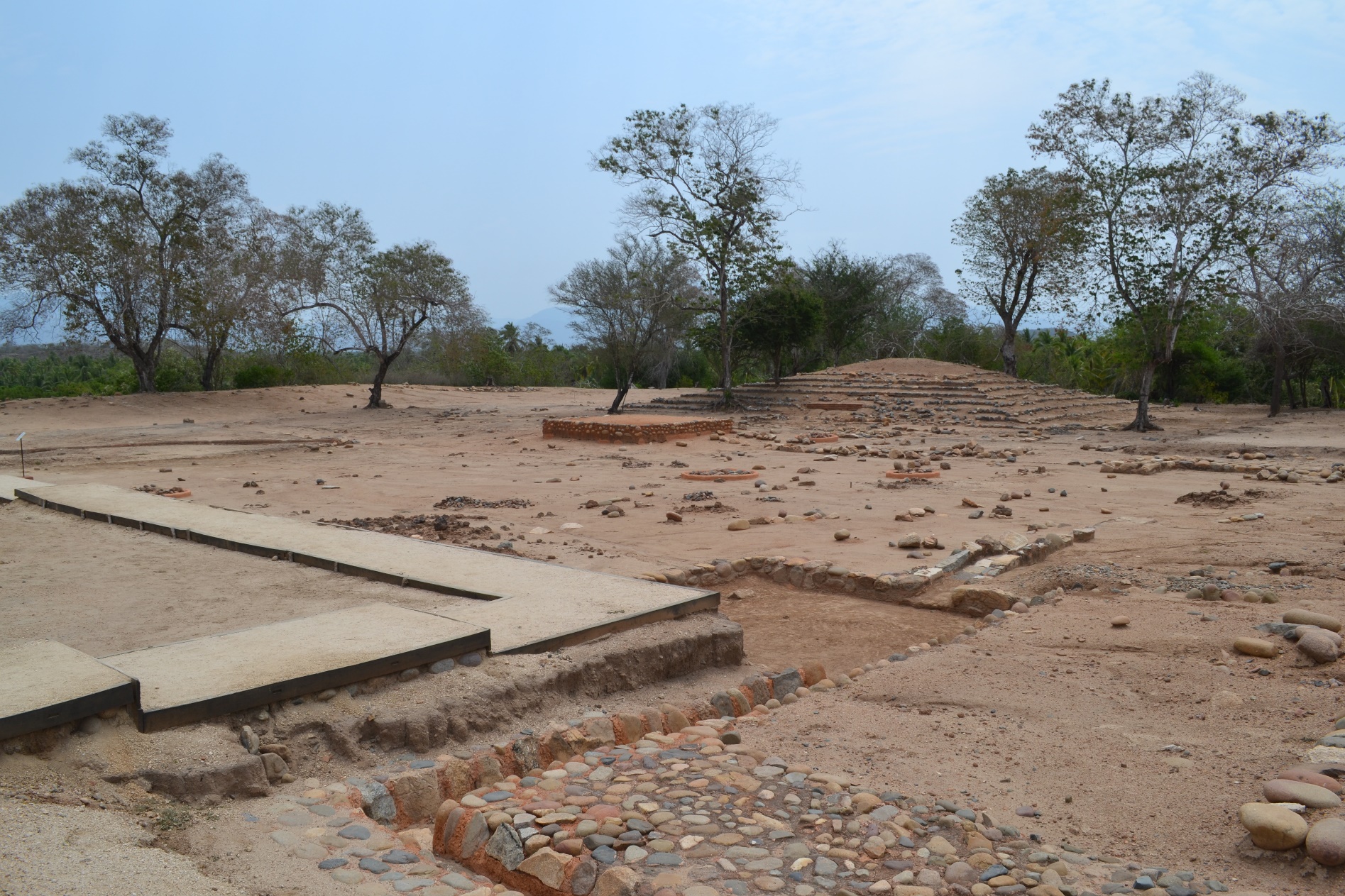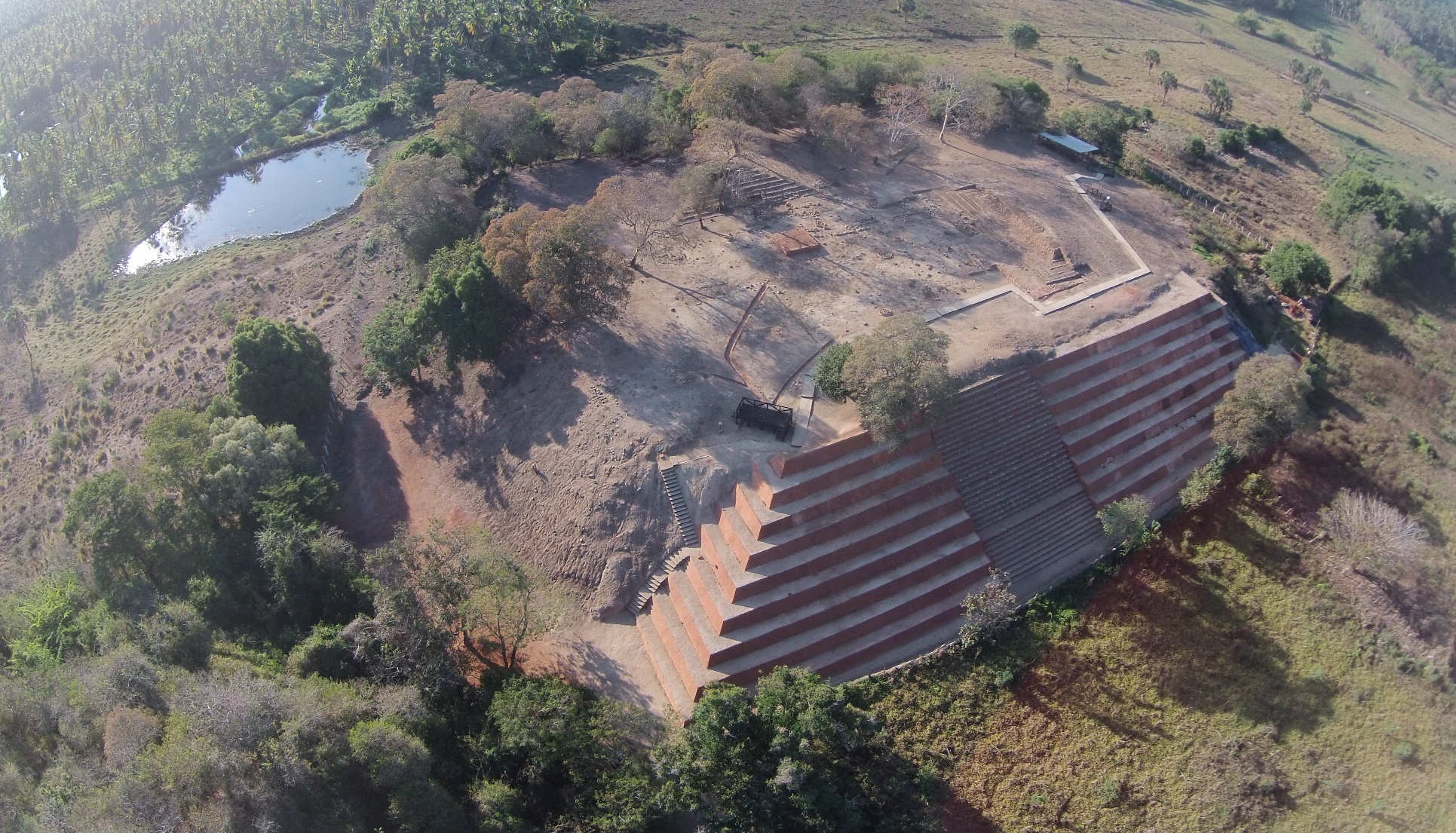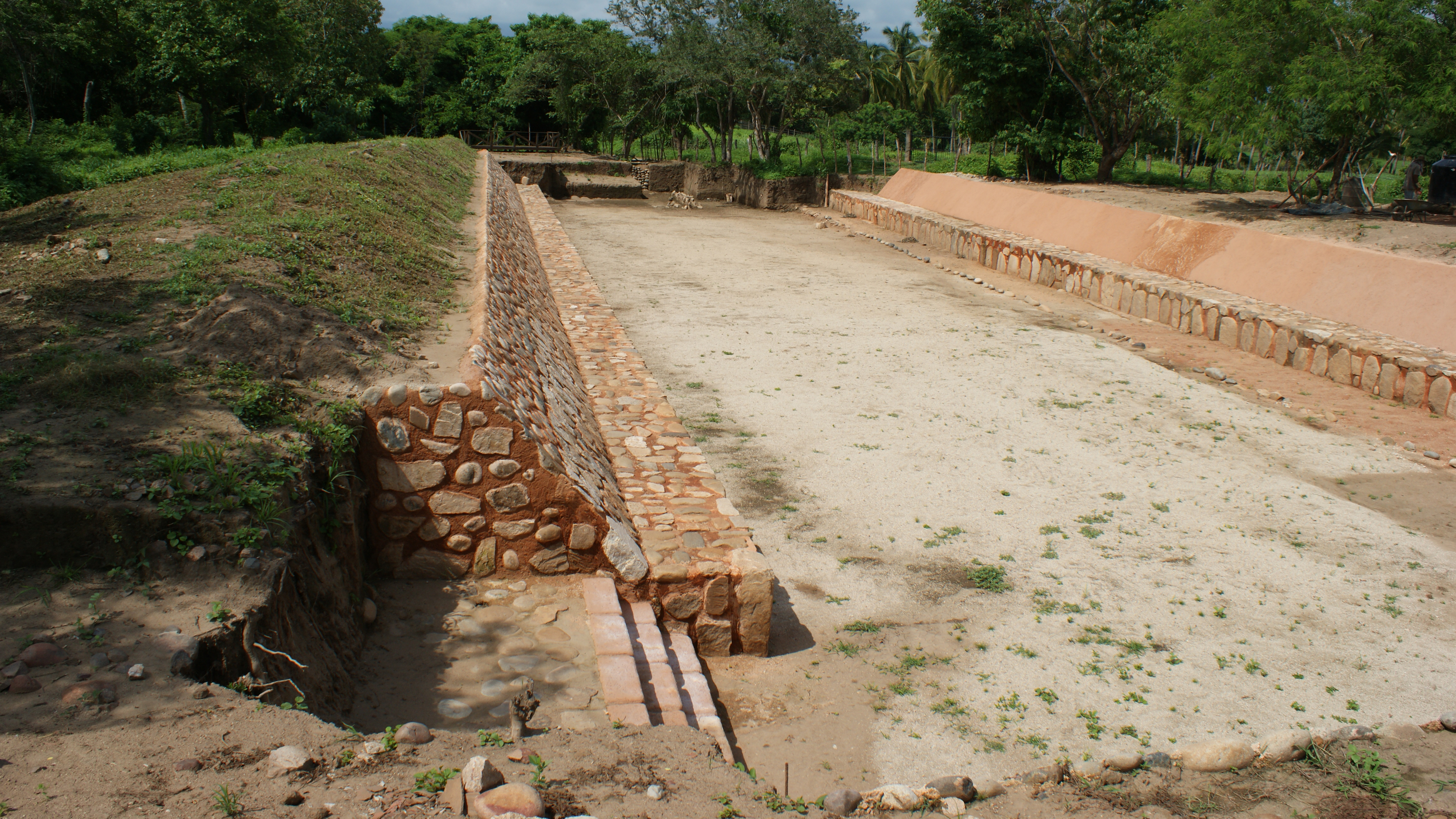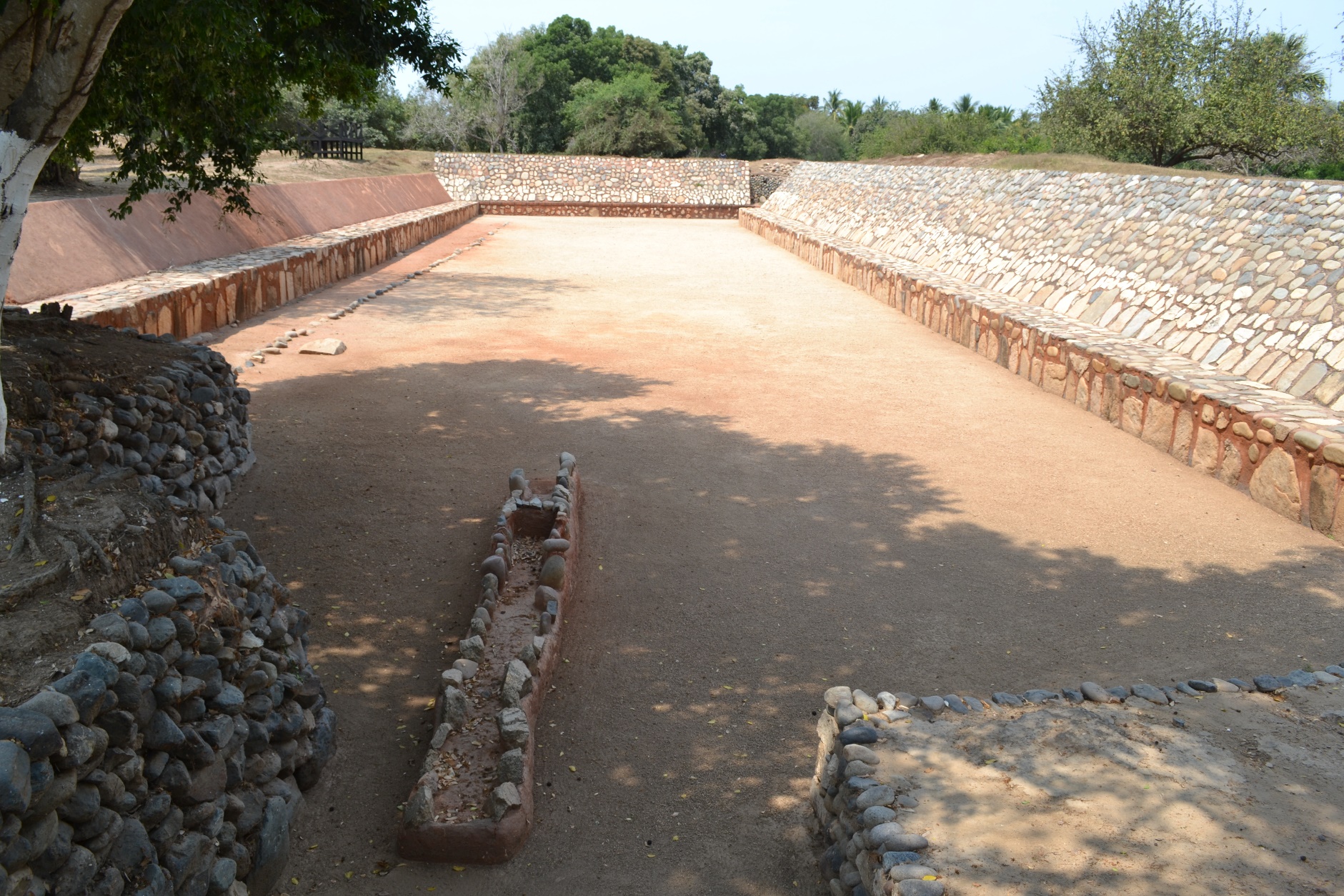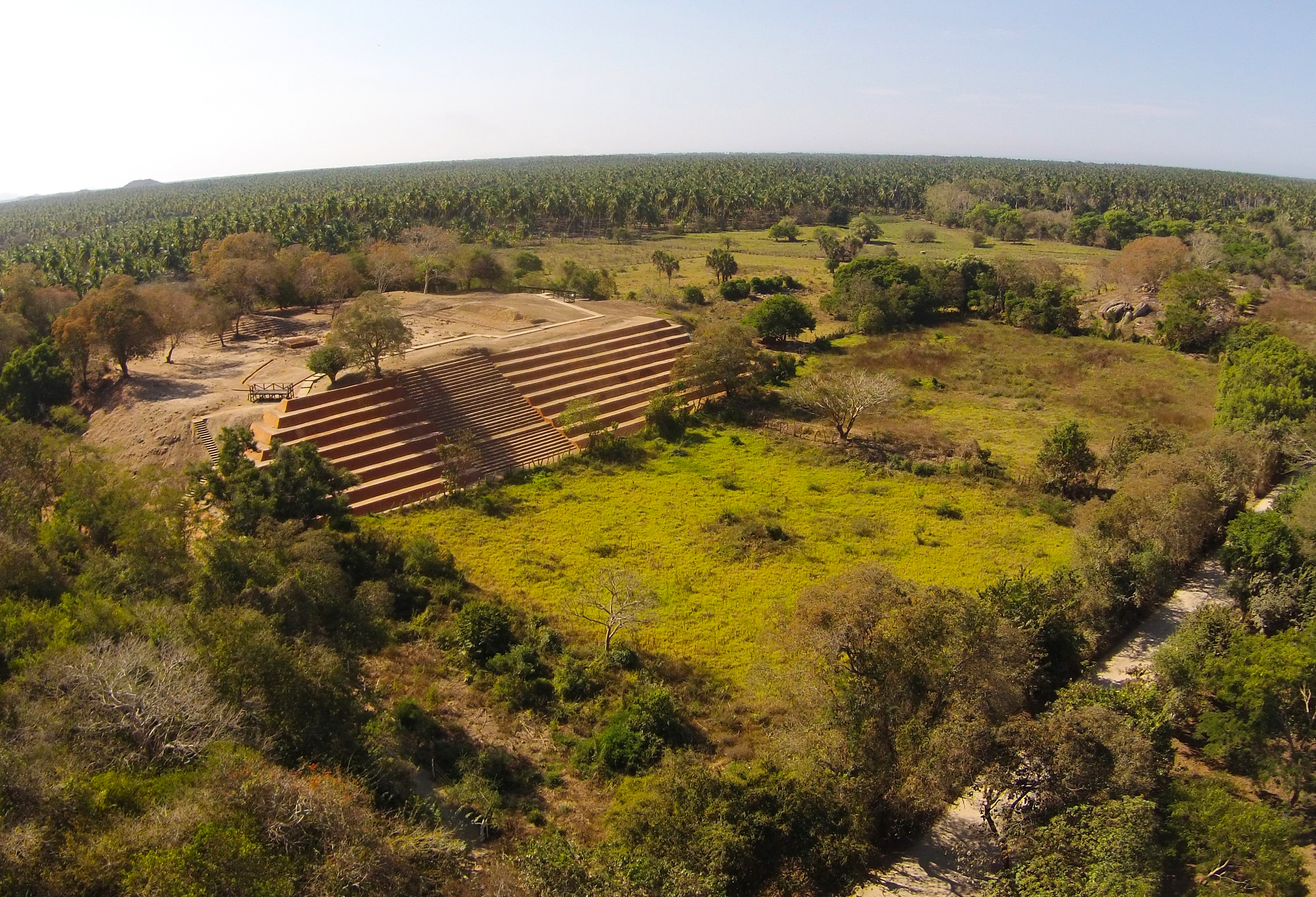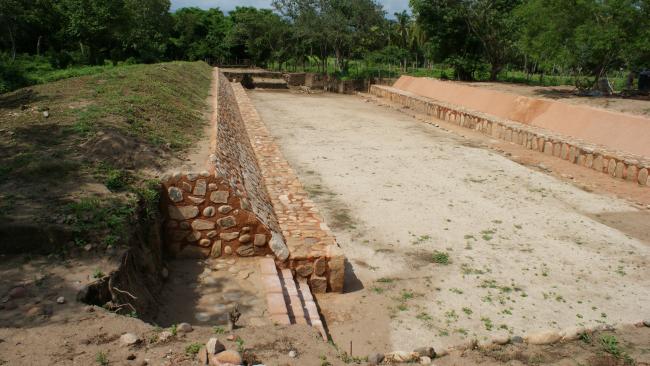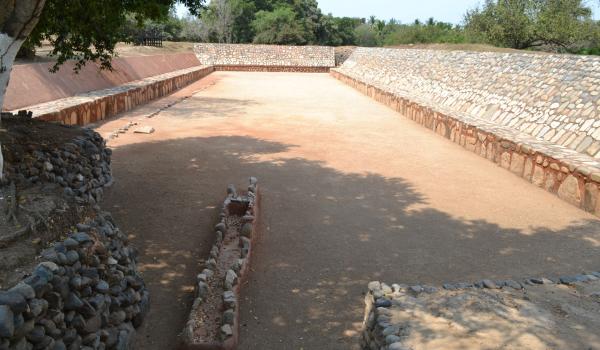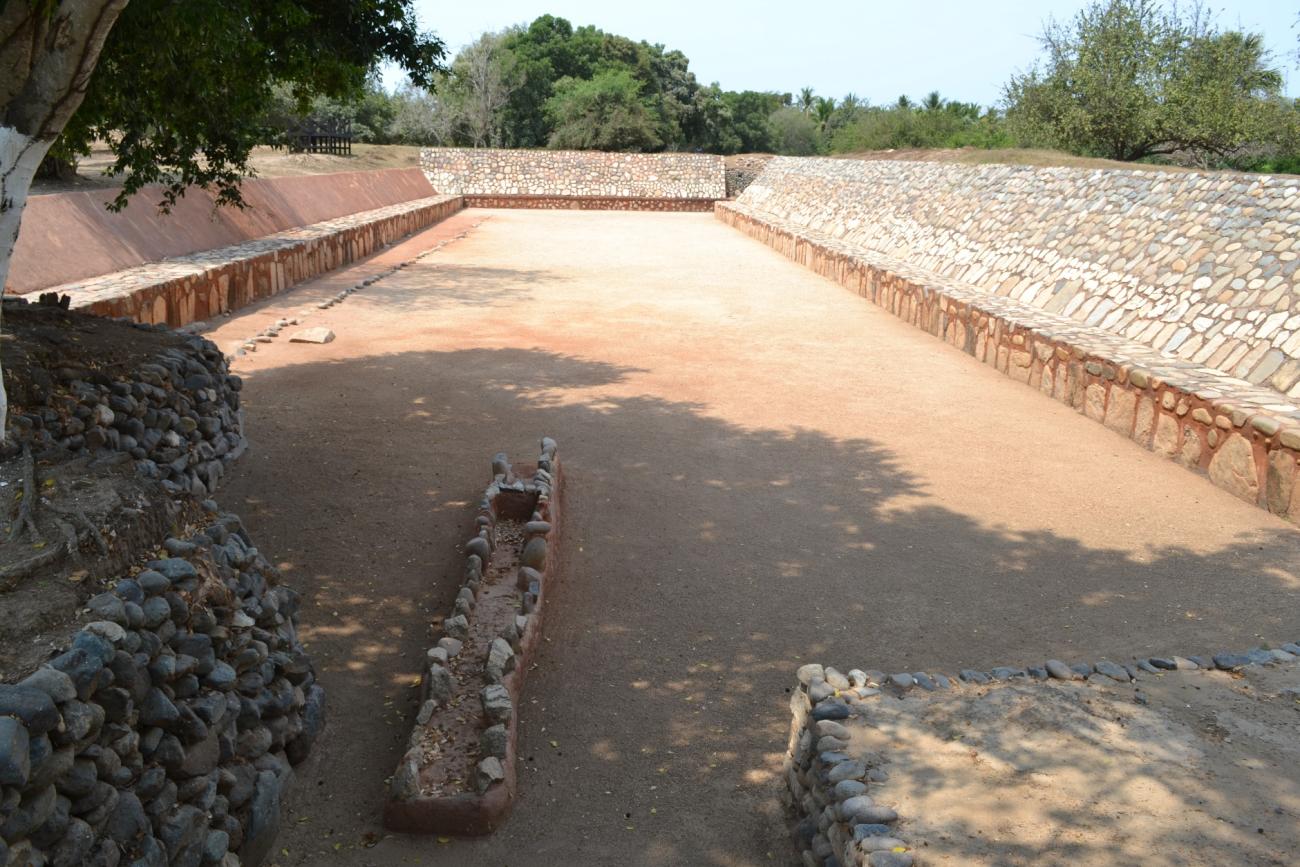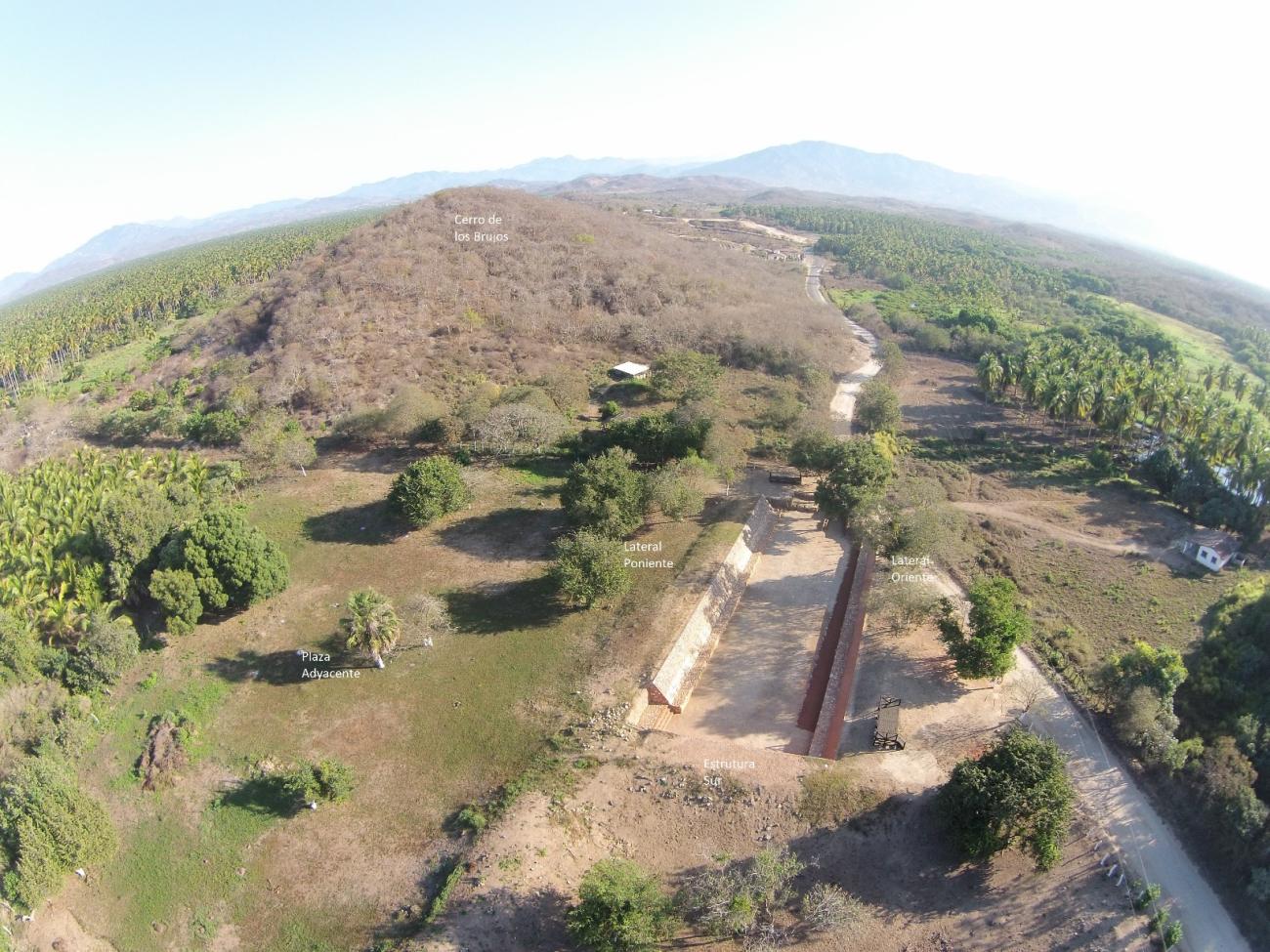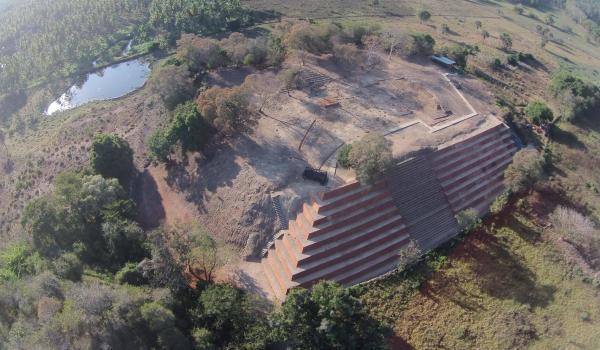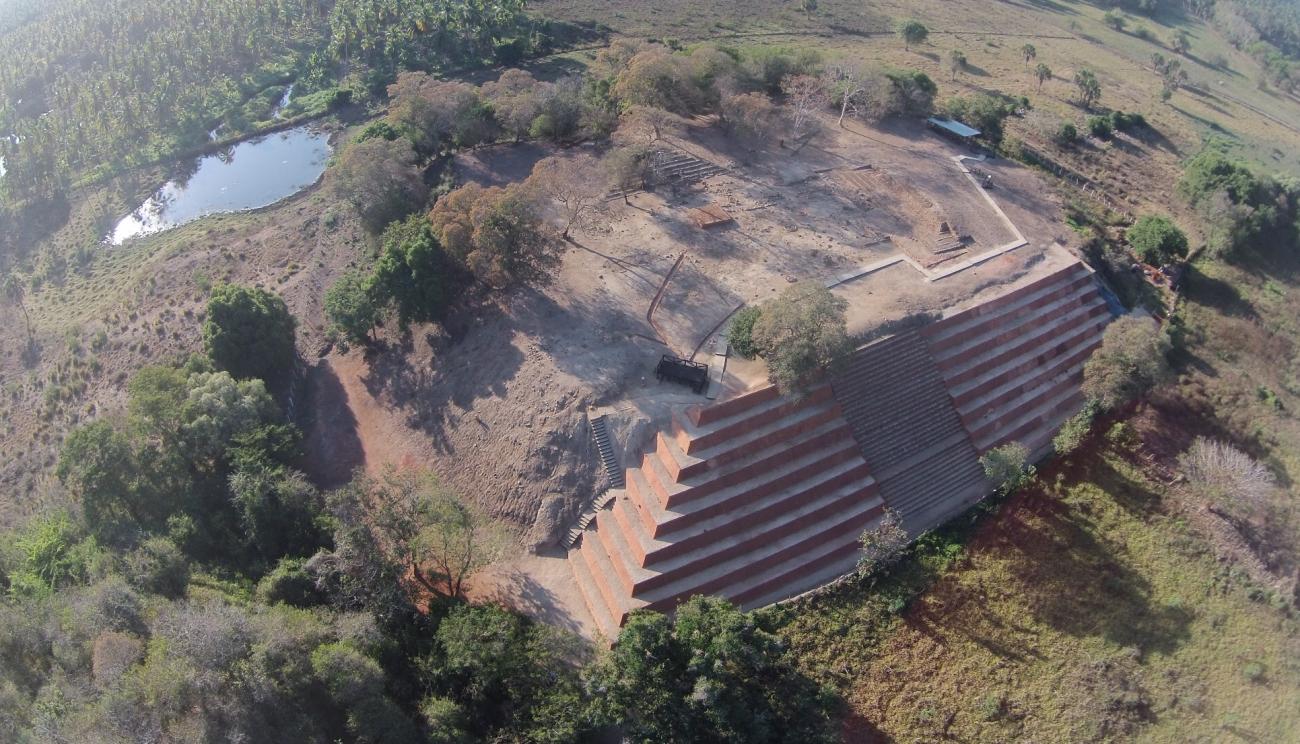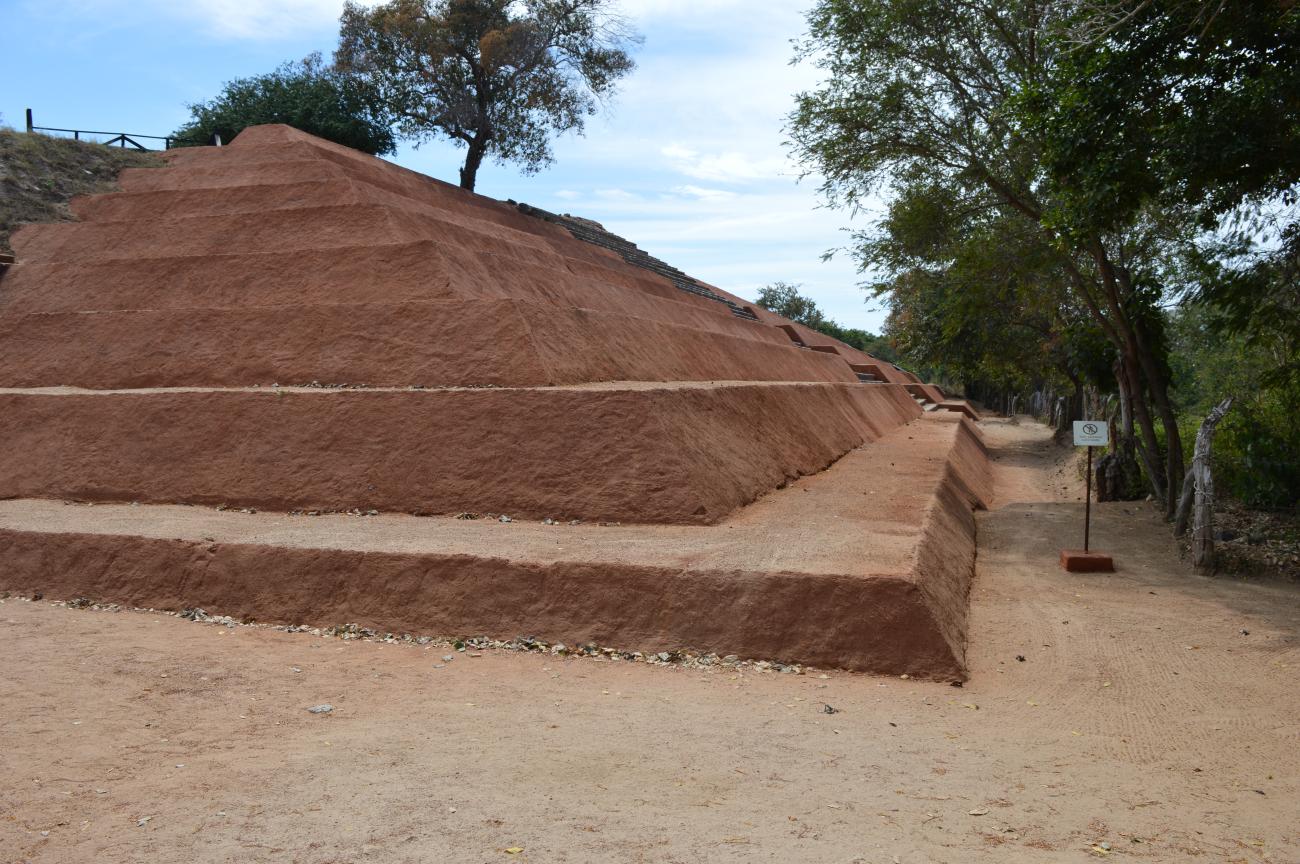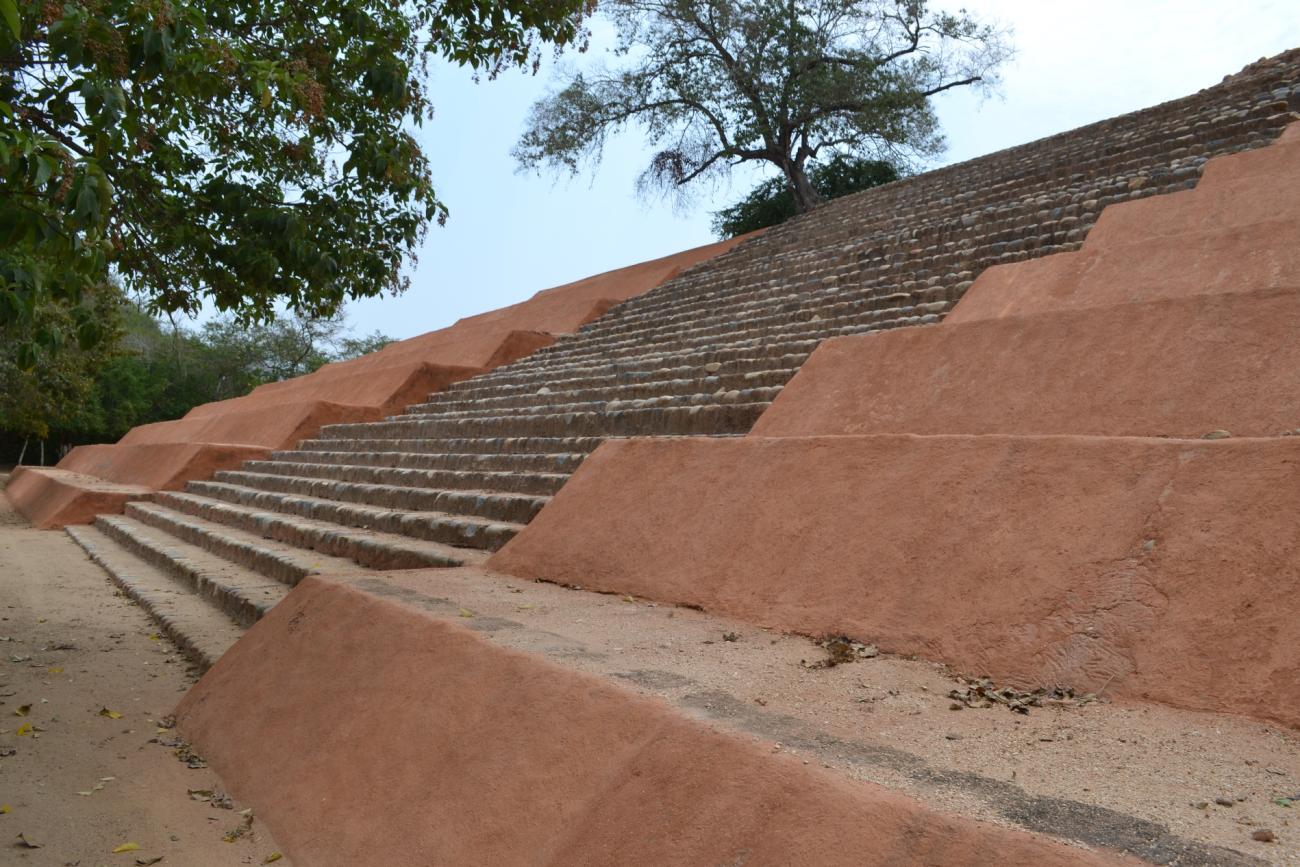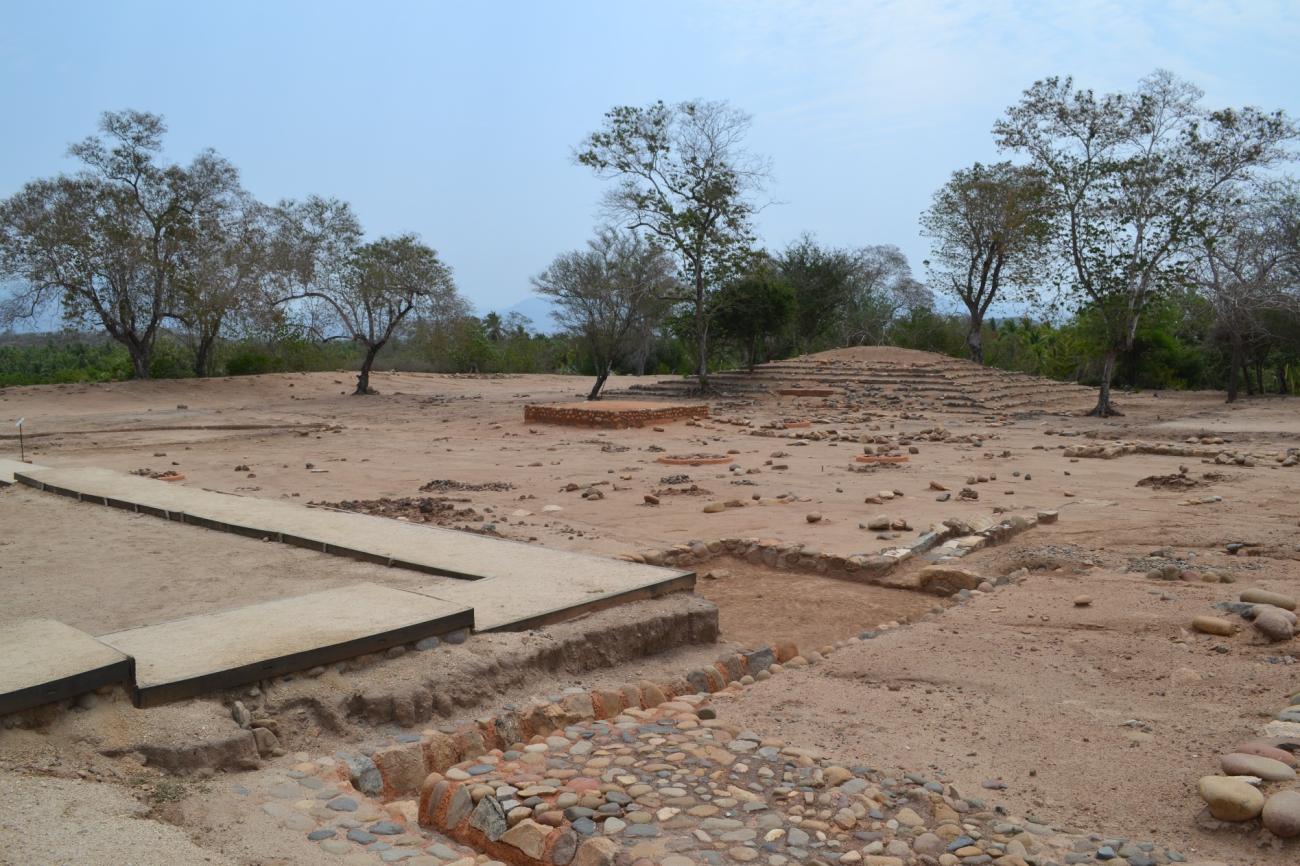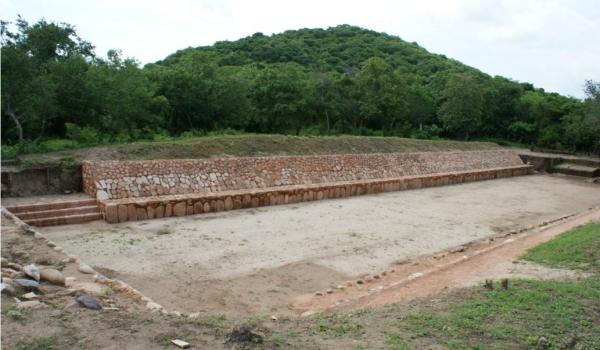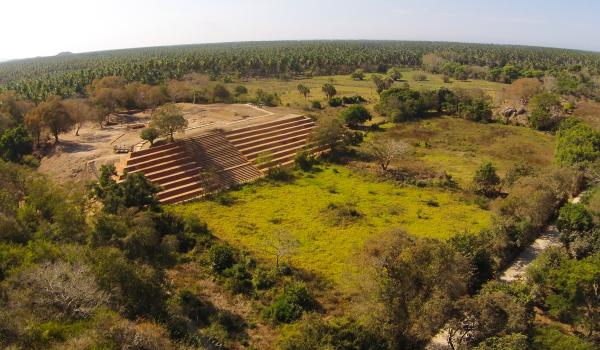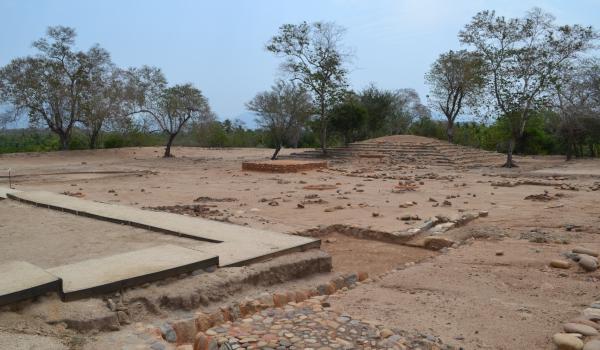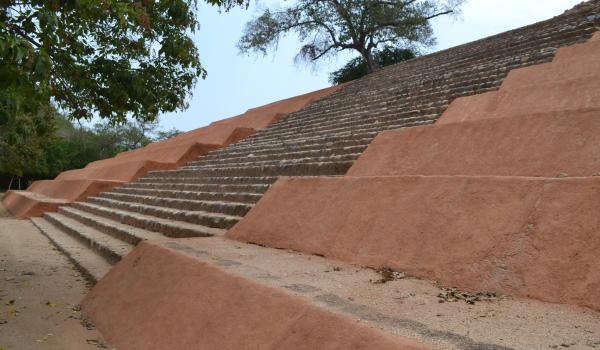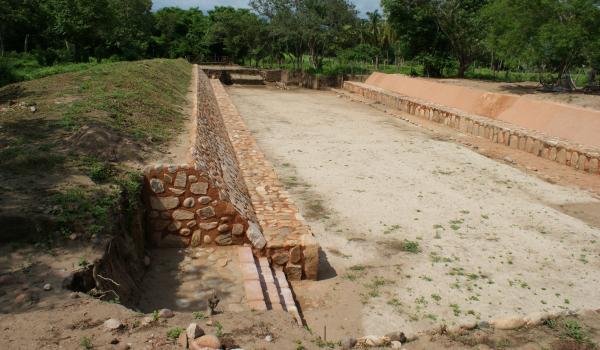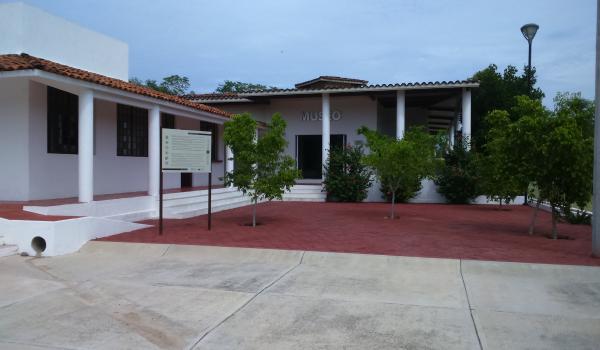The ancient city of Xihuacan was the main Cuitlatec religious center. Its territory covered the Costa Grande of the present-day state of Guerrero and the Sierra Madre del Sur between the municipalities of Petatlán and Zihuatanejo. The area was known as Cuitlatecapan, the “fiefdom of the Cuitlatecs,” after the group who inhabited the place from 2,500 BC and which in the sixteenth century covered a vast area between the coast and the Tierra Caliente. Its occupation dates from the Preclassic period. The most ancient area is on the top of the Cerro de Los Brujos, where figurines known as Baby Face and Pretty Woman were found. The Ceremonial Center is the second complex, an example of the innovative use of earthen architecture built around 450 AD taking astronomical references from the planet Venus, the Sun and the North Star to determine the layout.
The construction process involved making an adobe platform to level the terrain in an area of 72 acres where four massive buildings were erected, one of which was Mound B with adobe and baked clay cladding. These structures define a plaza whose northern part is associated with a palace area, the ballcourt and the southern slope of the Cerro de Los Brujos, incorporating them into the ceremonial landscape. Both these areas are surrounded by a system of artificial channels connected to the river San Jeronimo. Water still flows through them giving the settlement the air of a mythical island. The collapse of Xihuacan occurred around 1350 AD, after a meteorological phenomenon flooded the complex, leading to the gradual abandonment of the settlement.





